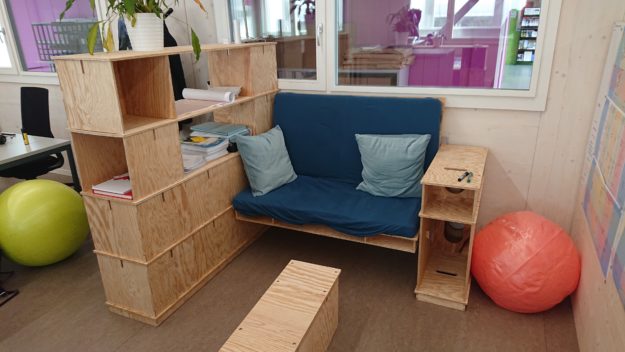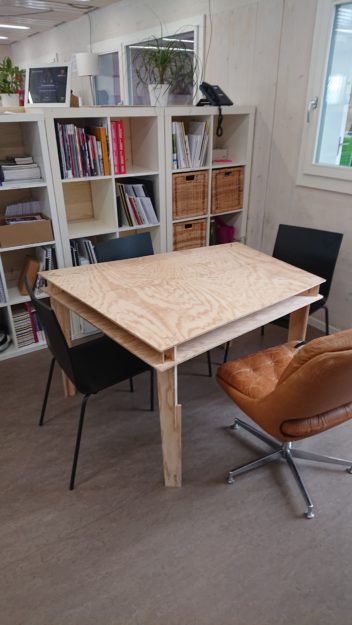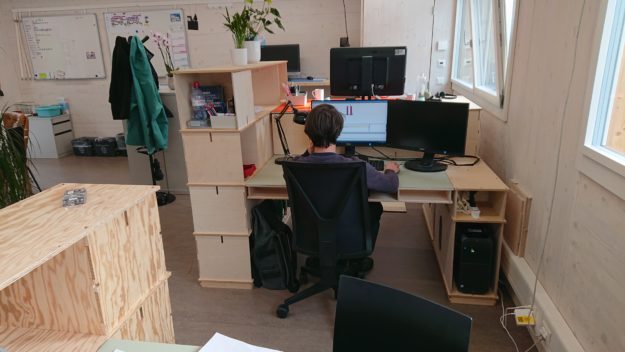Adaptable and reusable furniture
The emergence of new types of work environments intended to satisfy users' needs and accommodate different types of work specific to the organization of institutions/companies requires a systemic understanding of user comfort in offices.
The Multi-Confort project (in progress) approaches this issue by providing a useful theoretical framework for the concrete application of this systemic understanding of comfort: relations between user profiles ('anchor', 'connector', 'gatherer', and 'navigator'), types of activities, and types of spatial planning ('hive', 'den', 'cell', and 'club'). The resulting question, the first issue of this project, is the conversion and verification of this theoretical knowledge in a concrete case: how to design and implement a collective office layout that ensures the comfort of its users.
The first elements of the answer are provided by another case study, the redevelopment of the "TRANSFORM staff office" (2018) located in the Blue Hall. However, this case has two limitations: it was an empirical experiment and it was carried out by reusing existing furniture. These limits generate a second issue: what role does the furniture play in user comfort, beyond the ergonomic qualities present in the standard industrial offer?
The SmartMob project approaches these two issues in a concrete case, the refurbishment of the TRANSFORM teachers' office, also located in the Blue Hall, by involving its users.


